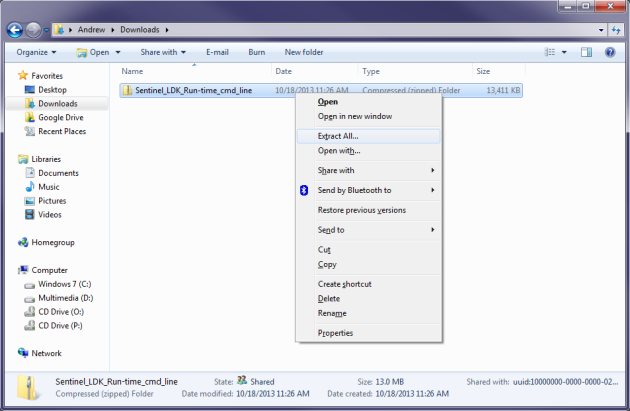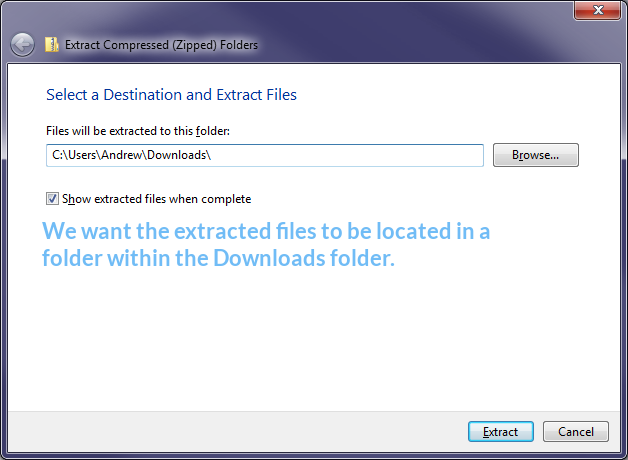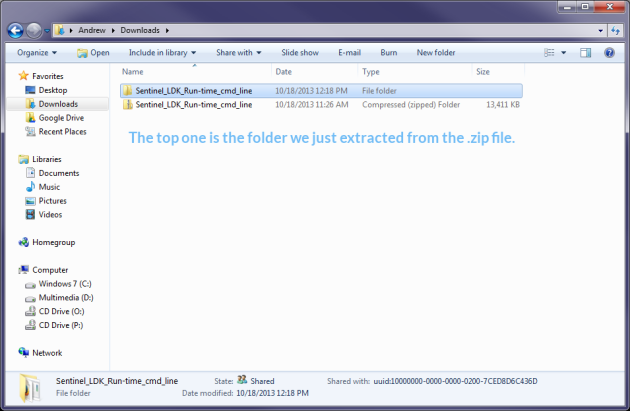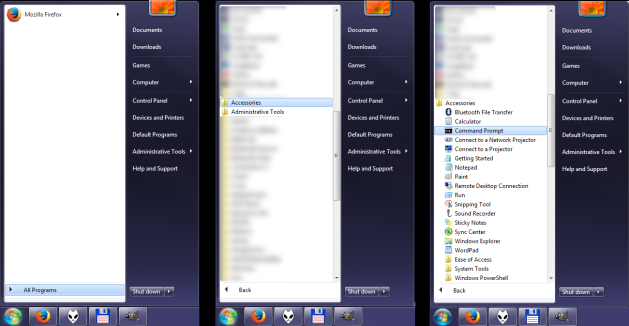A Mind Lost
Anything and everything.
Uninstalling the Sentinel License Service (hasplms)
One of the (many) things I absolutely hate is when, during the installation of a program, a ton of other crap is silently installed beside it without any warning or indications.
I just noticed a new service, “hasplms.exe”, running. I have no idea where it came from or what installed it. I did give Lightworks a spin yesterday (not impressed), as well as my lengthy ordeal attempting to install Tomb Raider Anniversary which I complained about in my last post, maybe one of them install it… but I dunno.
With no idea where it came from, and no uninstaller to be found, I turned to the Internet. It didn’t take long to find a YouTube video illustrating the uninstall process, and it was surprisingly pain-free. From hasp.com/srm (which redirects to sentinelcustomer.safenet-inc.com/sentineldownloads/) download the command line run-time installer and run it as
haspdinst.exe -purge
And it looks like the service’s gone, without me having to rage and fume about yet another bit of computer BS. Now I just have to see if anything breaks…
*Update 2013/10/18*
A few comments have prompted me to provide slightly more explicit instructions, with pictures. Anywhere you see my name (Andrew), expect instead to see your name (or whatever the name of the account you are using is).
First, downloading the software:
Open the Downloads folder, or wherever you saved the file to, and right click on the downloaded file. Click on “Extract All…”.
A window will open, asking where you want to extract the files from. Remove the highlighted part.
This is the path we want the downloaded files extracted to. Again, if your name’s not Andrew, that part of the path will be different.
Returning to the window that was showing us the Downloads folder, you’ll see the newly created folder.
Ensure that the “haspdinst” program was properly extracted, if you must.
Now you must open a “Command Prompt”. You can do this in various ways, but for now just use the Start Menu.
Your command prompt window may not look exactly like this; I use it fairly frequently, and so have resized and customized it to suit my uses. Also, be aware that I run Windows with UAC permanently disabled. I don’t know if UAC will interfere with this process. If it does, you’ll have to look in to running the command prompt with elevated privileges.
This next part may look like gibberish, but there’s only three commands that really need to be run (they are underlined in pink in the picture). Obviously, <ENTER> is the enter/return key.
cd Downloads<ENTER> cd Sentinel_LDK_Run-time_cmd_line<ENTER> haspdinst.exe -purge<ENTER>

A small window should pop up, asking you to wait. This will uninstall the software.
Hopefully this clears things up a bit.








Hi Andrew, don’t know how I can thank you : as a late Win8 user, I tried to move to 8.1 and got this stupid message about Sentinel runtime drivers. I say stupid because if you go to Microsoft FAQ, there are some 2013 “news” with obsolete links but not THE solution I found on your page.
I tried to get this haspdinst.exe on my machine, and found it, here : C:\Program Files\Hauptwerk Virtual Pipe Organ\InternalResources\USBKeyDriver-Win ! Yes, hidden between two organ pipes (Hauptwerk is a fantastic company, which records real historical organs around the world to virtualize them with a great sound). But I don’t know if they installed this un-installable Sentinel runtime drivers, anyway I launched *** haspdinst – purge ***, got “operation succeeded” message and I am now looking at Win8.1 normal (it seems) install.
Your page is very clear and didactic, and “d’utilité publique” ! full thanks.
Philippe
Virtual Pipe Organ\InternalResources\USBKeyDriver-Win ! Yes, hidden between two organ pipes (Hauptwerk is a fantastic company, which records real historical organs around the world to virtualize them with a great sound). But I don’t know if they installed this un-installable Sentinel runtime drivers, anyway I launched *** haspdinst – purge ***, got “operation succeeded” message and I am now looking at Win8.1 normal (it seems) install.
Your page is very clear and didactic, and “d’utilité publique” ! full thanks.
Philippe
Thank You!
Wonderful fix! It worked like a charm unlike the Microsoft fix. 🙂
Thank you Andrew
Thank you so much! You really made things easy! I have never used prompt before and I was able to uninstall the Sentinel.. so thank you!!
GREAT! Thank you. I have visited a lot of site’s explaining this but yours was the best. I followed every stap exactly and it works. Thank you!
5-11-2013
Btw, Command prompt is found by typing “cmd” in search, the second picture of “administrator: command prompt” is a bit confusing. I only had follow your instruction and type:
cd Downloads
cd Sentinel_LDK_Run-time_cmd_line
haspdinst.exe -purge
and I didn’t get so much information in my command prompt as in the picture. Just a hint.
Starting the command-prompt can be achieved by a variety of means. I chose to use the Accessories Start Menu entry because it is common to all modern Windows versions back to XP, and the typical computer user generally prefers the point-and-click method whenever possible.
The ‘dir’ commands show what one can expect to find within the respective directories; their intended goal was to (poorly) illustrate the concept of directory traversal from the command-line. I probably should have omitted it, but I prefer that people understand what is occurring, rather than just cut ‘n pasting a bunch of commands without really knowing what is going on.
Use of the command-prompt is a dying skill, sadly. I keep meaning to write a post to provide an easy introduction to it, to demystify it, but never seem to get around to it.
I’ve followed all of these steps multiple times yet for some reason as I use the command prompt within the folder that I extracted and holds the haspdinst.exe, it shows “0 files”. This prevents me from using the purge action to delete the file. Any idea why this would be the case?
If the dir command is not listing any files in your current working directory, then you are not “within” the correct directory. If directory navigation is confusing, I would suggest attempting to move the haspdinst.exe program to the root of your drive (that’s C:\) via Windows Explorer. I am unsure if UAC will complain about creating a file in the root of the drive. Once you have the program at C:\haspdinst.exe, start the Command Prompt and try:
cd \
haspdinst.exe -purge
I probably should have simplified the instructions by suggesting this from the beginning. If the process completes successfully, you can delete C:\haspdinst.exe.
Thanks a lot, very helpful
When I ran haspdinst.exe on my 64-bit Dell laptop, I got an error saying there was a problem with their 64 executable. I stopped hasplms and deleted the executable file from Windows/System32 folder, ran the purge again and it completed. I refreshed the WIndows 8.1 installer. It proceeded with the install.
What do you think about this. ‘haspdinst.exe’ is not recognized as an internal or external command, operable program or batch file.
Thats what i get after i go through all three steps above. THank you for tackling this issue!
It means that you are not “within” the correct directory (or folder, if you prefer) containing the program you are trying to run.
Thanks, really helpful as i needed to uninstall this to install windows 8.1!
THANKS. Just THANKS!
Worked fine on first try – thx.
The FTP site requires a login ID and Password to download that file… any suggestions?
I just downloaded it without any request for a password:
http://sentinelcustomer.safenet-inc.com/sentineldownloads/
Sentinel HASP/LDK – Command Line Run-time Installer
Windows , 13 MB, Version 6.60, Released 2013-08-08
thanks for this post ! for me sentinel runtime driver is the driver of my dongle licence for Windev ( developping tools)
And this is an important point. For me, the software was an unwanted extra from trying out something else. Always double check that it’s unneccessary before uninstalling anything.
When I double click on the installer it just open a window labeled Sentinel Runtime environment installer, with only an OK button at the bottom. How and where should I run this command you mentioned above?!
You must run it with the ‘-purge’ argument, which double clicking doesn’t do.
Open a Command Prompt (Start Menu->All Programs->Accessories->Command Prompt). A window will open with a line that says something like “C:\Users\(USERNAME)>”. Assuming you saved the run-time installer in the Downloads directory, you should be able to execute it with the commands “cd Downloads” and “haspdinst.exe -purge”.
If you don’t know how to work a command prompt, try using Google – there’s plenty of sites with tutorials. Good luck!
*EDIT* I just went back to check the process again, and realized the installer comes in a zip file. I am in the process of updating this post with pictures to illustrate the process.